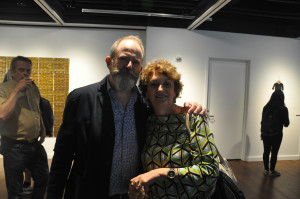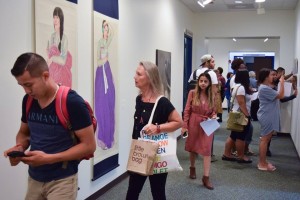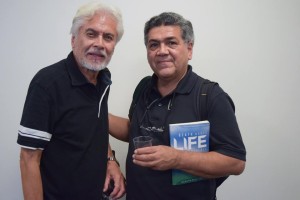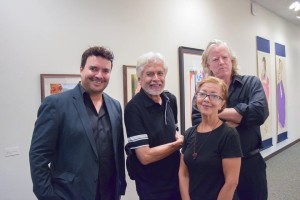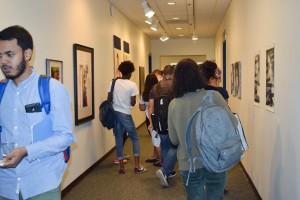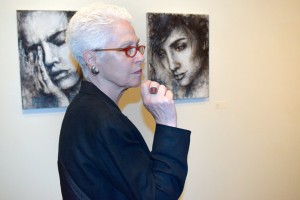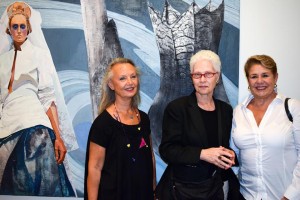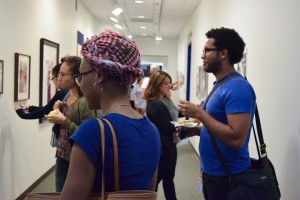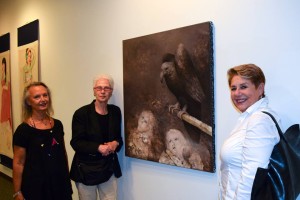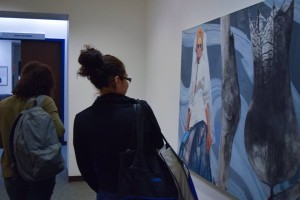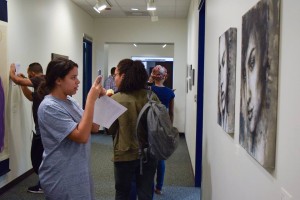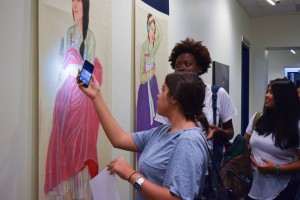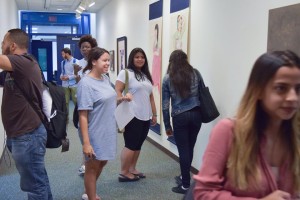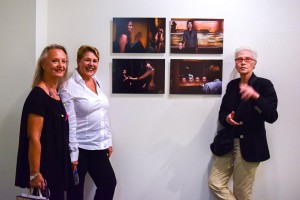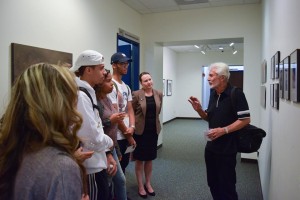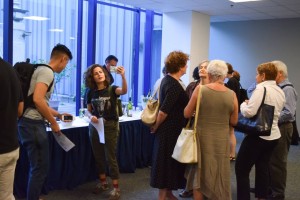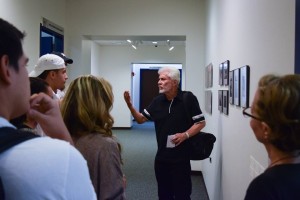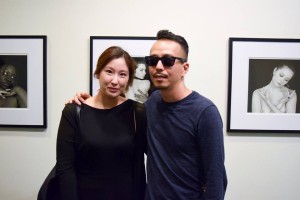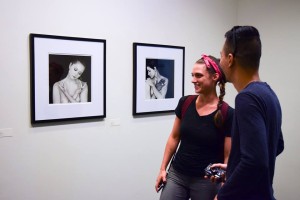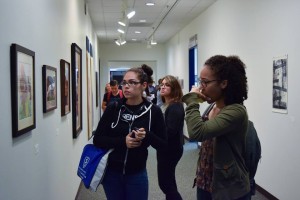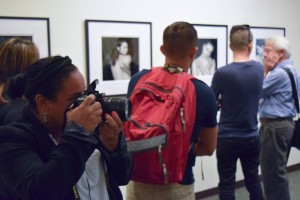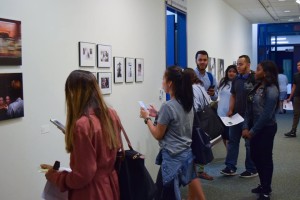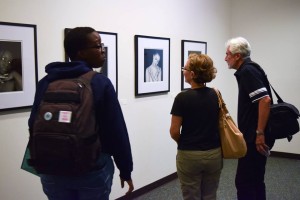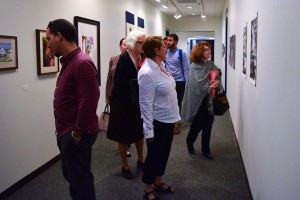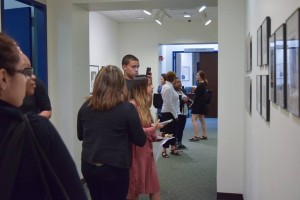On view from September 15 through November 04, 2016
The President’s Gallery
This exhibition celebrates women and their varied roles as seen in the works of global artists. From the beginning of time and seen in mother religions, and different ethnic mythologies woman was sought out as nurturer, shaman, and goddess. In matrilineal societies, descent has been passed down through the mother as evidenced in Egypt, Sri Lanka, Northwest India, in the Mosuo people of China, the Basques of Spain and France, and in Judaism. In Catal Huyuk, Asia Minor and Mesopotamia we came across her as the mother goddess Astarte, also known as Ishtar or Inanna.
In Minoan culture the female was worshipped together with the bull god and their sanctuaries were situated between two mountains meant to act as corollary to both male and female sexual anatomies. Throughout myth and history the female has held many roles attaining different names in her many societal roles seen in Persephone the daughter of Demeter, as beloved in Euridice, as Penelope Odysseus’ faithful wife, as lover in Venus, and even as warrior in Athena. As the Oceanic Goddess Jugumishanta she created the earth with Moro-Funa, as Ala of the Ibo people in Nigeria she is goddess of fertility and in general all things. In the Arab world pre-Islam she was known as Allat who represented the earth and its fruit.
Despite their glorious past, today some women are still under-appreciated, shunted and/or underpaid in a primarily ‘masculinist’ business world or by society in general. Sometimes they are even criticized for working outside their homes when according to some, they should be home taking care of their young. So that, it is more important than ever to acknowledge the complexity of women’s roles and contributions in the everyday, but also to honor them in works of art.
The artists of this exhibition depict the qualities of female strength, dedication, tirelessness, beauty, and flexibility but also their vulnerability, anguish and delicacy. Moreover, they depict their psychological multidimensionality as well as being critical when necessary in their portrayals. Overall, this show is meant to acknowledge women and their spirit while exploring issues such as equity in the workplace, and at home.
Vangelis Rinas’ life pursuit has been predominantly the female subject. In his anxiety to portray freedom in human endeavor he uses a photorealist approach in order to better explore the mystery and ambiguity of his female sitters. He has “the feeling that man’s ultimate possession freedom, is at risk” thus he paints woman as the hope of renewal in humanity. Frandy Jean depicts the problematic existence and social issues of Haitian women and children in the hopes of awakening his viewers to their plight. The sitter’s feelings are exposed during moments of pain as seen in the crying woman inspired by events such as the 2010 earthquake when many lives were lost. Jean’s empathy is evident in his portrayal of women who although experiencing pain, nevertheless demonstrate an underlying endurance and flexibility that goes back to time immemorial. In her paintings Lena Morfogeni undertakes a journey through a socio-cultural approach while analyzing her production to engage the viewer in a critical dialogue. In her paintings whether the women are young, or old, shown screaming or happy, they are emotional creatures. Morfogeni explores the rich complexity of a feminine psychological world in canvasses that never fail to impress their viewer in her chosen métier as well as in their powerful expression. Dongyeoun Lee utilizes traditional methods such as hand ground paints from natural materials, on hand made paper called Hanji, in hanging scroll formats to depict Korean women in ethnic costumes. She does this not to reinforce their historical roles but to break away from them for she adds some contemporaneous elements such as a Walkman or earphones. Instead of cooking or cleaning her women dance, sing and in general behave unlike traditional Confucian entities.
Helene Pavlopoulou’s large formatted paintings are centered on women within backgrounds of multi-layered commentaries. Her style although based on Renaissance precedents because of its anthropocentric focus, even contains some Byzantine characteristics like gold grounds. However, rather than painting the acerbic, controlled characters of the past, Pavlopoulou affords them an air of independence, and respect. As seen in his painting Lost Innocence, George Pol. Ioannides engages us with aspects of female oppression, exploitation and inequity. In his young female subjects these elements are symbolized by the blood dripping above their heads that imply suffering. The cherubic Renaissance-like little girls appear at odds with such violence as the drop of blood signals which makes the work even more powerful not only in its shocking quality but also in its directness.
Aside from the painters mentioned above, the photographs of the following three artists stand as living portraits of women and their complexity. In his photographs, Orestes Kourakis comments on his sitters’ private moments while simultaneously showing their public demeanor through the use of mirrors. Kouraki’s women wear clown outfits and sit at the makeup mirror painting their faces as if readying for a performance, while their reflected images show their true feelings— anger or sadness. He recognizes these women as people with multiple responsibilities and roles that sometimes conflict with their innermost feelings. Frank Gimpaya also seems to be examining women’s private moments for he portrays his sitters with mirrored glasses or radically crops his photographs to show only parts of their bodies. This photographer’s approach is reverent for when he depicts women they are strong, independent, and sexy all at once. Jason River in this series tries to capture women’s feelings as expressed by the movement in their hands and most importantly, their connection with others. Consequently in Mal and Amy, 2009 a young African-American woman with linked hands under her chin beams at us. However, we are problematized in reading this image when faced with two hands whose color doesn’t match. And in Lisa and Carlos, 2010 the white model is hugging herself but the hand is black and moreover, appears to be a man’s implying a romantic relationship. River impacts us with the idea of connection through his use of a variety of various ethnicities coming together in the body of a woman. His approach is successful for what better way to show unity than an embrace, or a link?
These artists comprised of painters and photographers, have shown us only a few aspects of female character but there are countless more complexities that we could never hope to show in one exhibit or indeed even a thousand. However, the artworks have been grouped in this show to pay homage to the female spirit of indomitability, spiritual strength, and creativity.
Curated by: Dr. Thalia Vrachopoulos
Review: The National Herald (Greece) http://www.ekirikas.com/εντονη-ελληνική-παρουσία-σε-έκθεση-στ/


